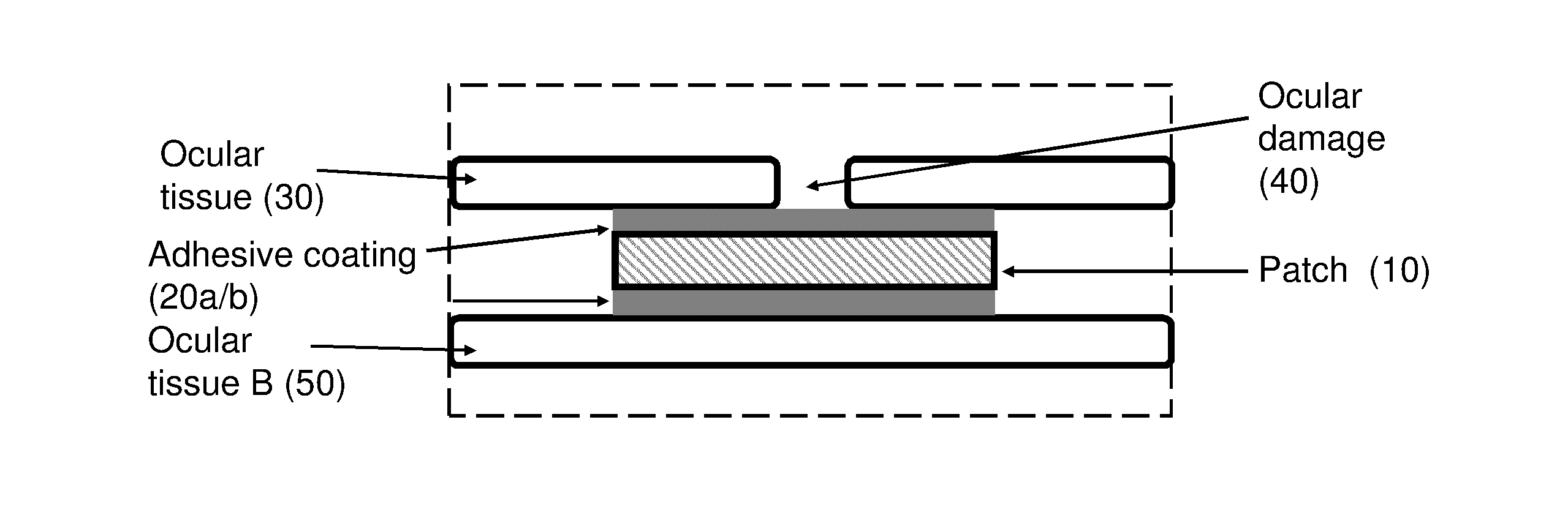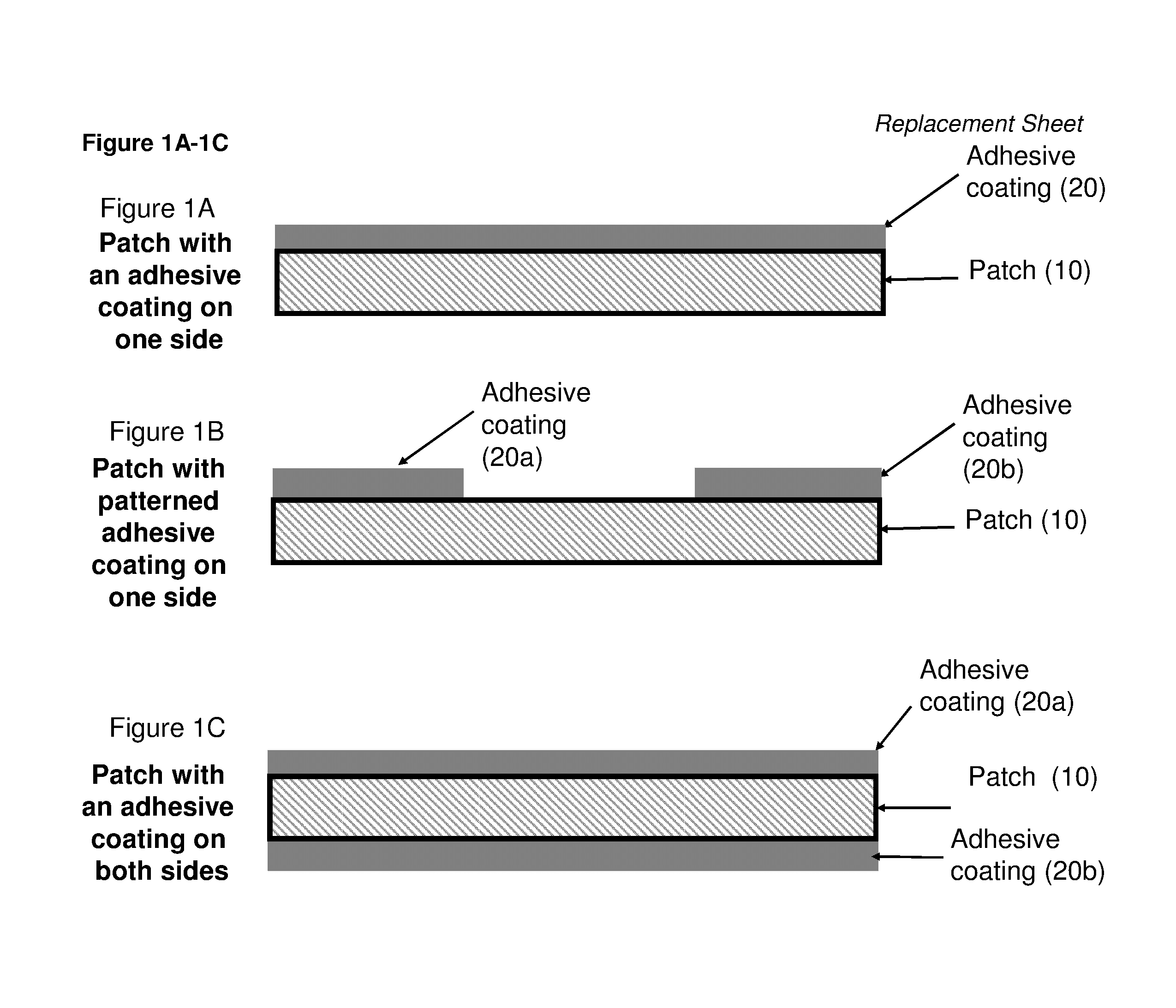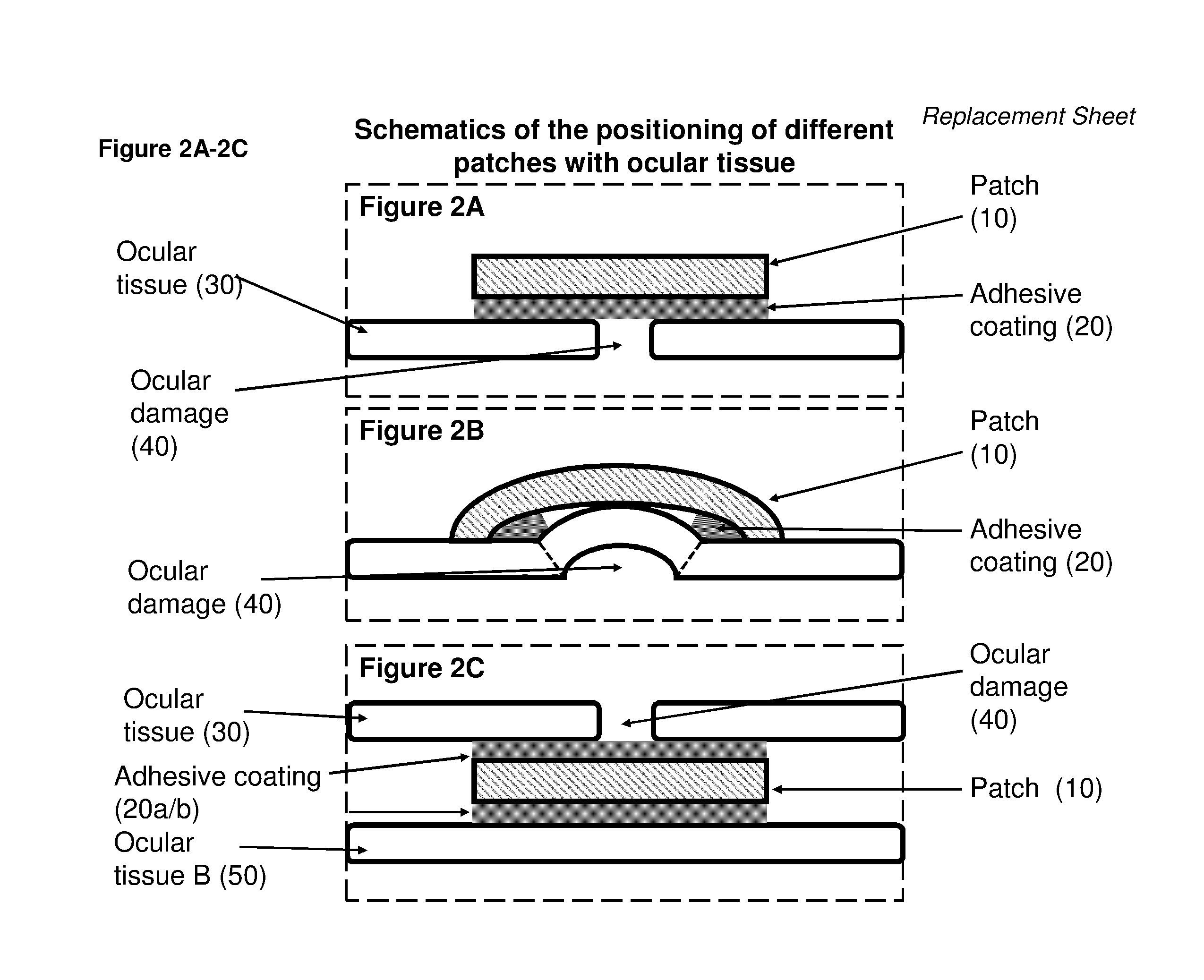Polymer substrate retinal patch coated with adhesives
- Summary
- Abstract
- Description
- Claims
- Application Information
AI Technical Summary
Benefits of technology
Problems solved by technology
Method used
Image
Examples
example 1
[0056]Preparation of Polymer Patches Coated with Adhesives
[0057]PNIPAM treated patch by chemical vapor deposition: Inside a vacuum chamber, acryloyl chloride monomer were flowed over parylene C substrates that were functionalized with vinyl groups on their surface. The rate of growth was controlled by the rate of flow of monomer and reactants. Following deposition, both patch types (the CVD and disintegrin, discussed below) were rinsed in de-ionized water to remove unpolymerized monomer. CVD-based patches were prepared using the conditions prescribed for growing pNIPAM thicknesses of 100 nm, 400 nm and 800 nm. To improve the network of pNIPAM chains in the substrate and improve anchoring, cross-linking groups may be added to the process.
[0058]Disintegrin treated patch: Modification of defined areas of the silicone (Nusil MED-4860) and parylene C surface via laser processing was conducted in order to attach vicrostatin (VCN) to the surface of the patch. The silicone surface was irrad...
example 2
Adhesion Evaluation
[0059]PNIPAM-treated parylene C and disintegrin-treated parylene C, synthesized using the approaches described in Example 1, were tested. Adhesion to dissected cadaveric porcine retinal tissue was characterized under ideal normal force conditions using a uniaxial tension tester.
[0060]The studies were conducted to assess whether the patches were capable of meeting the adhesion performance of retinal tissues in uniaxial tension testing. Additionally, the polymeric patches were assessed to determine whether the polymers as provided herein comprising the pNIPAM can be removed using a temperature lowering protocol, and whether the polymers as provided herein comprising disintegrin adhesives can be removed using an enzyme cleaving protocol utilizing an enzyme solution containing plasmin.
[0061]Results:
[0062]The attachment strengths between different individual patch and retina tissue are listed in Table 1, below. The pNIPAM treated parylene C sheet predictably and revers...
example 3
Evaluation of Retinal Patch in Cadaver Porcine Eyes
[0063]Experiments were performed to evaluate the use of disintegrins as adhesives to place and adhere a patch on the retinal surface of cadaveric porcine eye model, mimicking clinical cases. Integrins work as receptors that interact with the elements from the extracellular matrix (ECM), connecting the cytoskeleton with the cell surface. Their structure is heterodimeric, composed of alpha and beta chains, which are expressed in the surface of the mammalian cells. Disintegrins are small, disulfide-rich, RGD-containing peptides, which bind with high affinity to integrin subunits such as αIIb, αv, aα5, α1, α3 and β5.
[0064]An observational case-control trial was performed using 3 groups, each group comprising eight eyes. Group 1 included pig eyes, in which an open sky vitrectomy was done (see e.g., FIGS. 5-7; involving the removal of the cornea to expose the retina, though in surgical patients, traditional vitrectomy approaches are used)...
PUM
| Property | Measurement | Unit |
|---|---|---|
| Adhesivity | aaaaa | aaaaa |
| Biocompatibility | aaaaa | aaaaa |
| Affinity | aaaaa | aaaaa |
Abstract
Description
Claims
Application Information
 Login to View More
Login to View More - Generate Ideas
- Intellectual Property
- Life Sciences
- Materials
- Tech Scout
- Unparalleled Data Quality
- Higher Quality Content
- 60% Fewer Hallucinations
Browse by: Latest US Patents, China's latest patents, Technical Efficacy Thesaurus, Application Domain, Technology Topic, Popular Technical Reports.
© 2025 PatSnap. All rights reserved.Legal|Privacy policy|Modern Slavery Act Transparency Statement|Sitemap|About US| Contact US: help@patsnap.com



